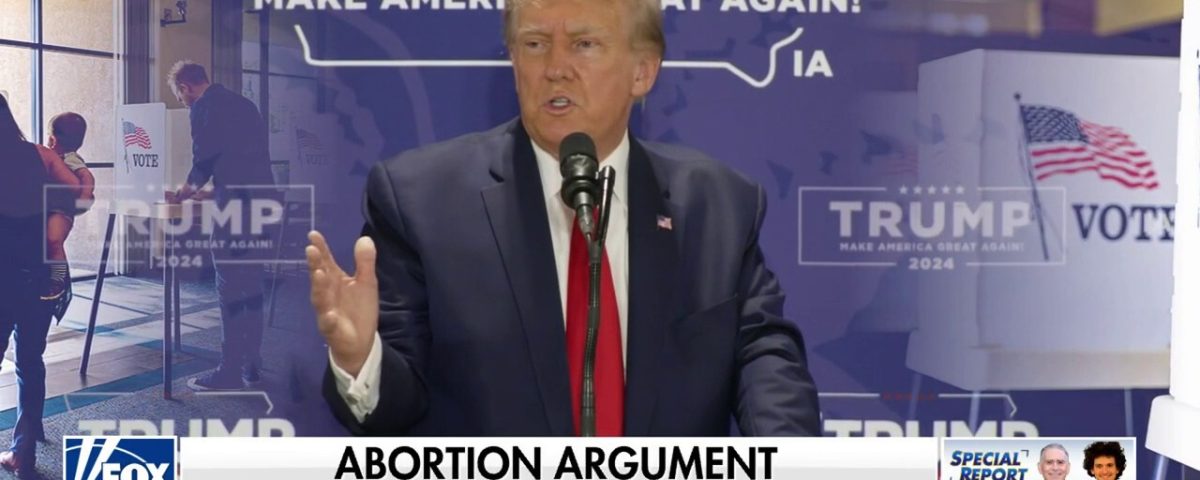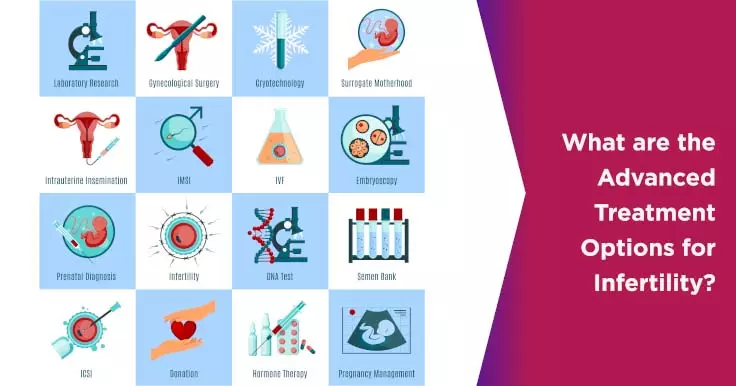
Does Medicaid Cover IVF? Your Guide to Understanding Fertility Treatment Options
April 15, 2025
Does JD Vance Want to Cut IVF? Unpacking the Debate
April 15, 2025Is Trump Banning IVF? The Truth Behind the Headlines
In vitro fertilization (IVF) has been a lifeline for millions of families struggling to have kids. It’s a topic that hits home for so many—whether it’s a friend, a family member, or even you. Lately, though, there’s been a swirl of chatter about whether former President Donald Trump is out to ban it. Social media’s buzzing, news headlines are popping, and people are genuinely worried. So, what’s the deal? Is there any truth to this, or is it just noise? Let’s dig in, cut through the confusion, and figure out what’s really going on—because this matters.
What’s the Rumor All About?
The idea that Trump might ban IVF didn’t just come out of nowhere. It’s tied to bigger debates about reproductive rights, especially since the Supreme Court overturned Roe v. Wade in 2022—a move Trump proudly took credit for. That decision sent shockwaves through the country, leaving states to decide their own rules on abortion. And because IVF involves creating embryos outside the body, some folks started wondering: could it get caught up in the same legal mess?
Fast forward to 2025, and Trump’s back in the White House as the 47th president. During his campaign, he made some bold promises about IVF—like saying the government or insurance companies would cover it. But then there’s his party’s platform, with talk of “fetal personhood,” which could complicate things. Add in a recent executive order he signed, and suddenly people are asking: Is he supporting IVF or secretly trying to shut it down? The mixed signals have everyone on edge.
Trump’s Stance on IVF: What He’s Actually Said
Trump’s been pretty vocal about IVF lately, and it’s not what you might expect from the rumors. Back in August 2024, at a rally in Michigan, he said, “Under my administration, your government will pay for—or your insurance company will be mandated to pay for—all costs associated with IVF treatment.” That’s a big promise! He even doubled down in October, calling himself “the father of IVF” during a Fox News town hall. Sounds like a guy who’s all in, right?
Then, on February 18, 2025, just a month into his second term, he signed an executive order at Mar-a-Lago. It’s not a ban—far from it. The order tells his team to come up with ideas to “protect IVF access and aggressively reduce out-of-pocket and health plan costs” within 90 days. White House Press Secretary Karoline Leavitt called it “promises made, promises kept.” So, on paper, Trump’s pushing to make IVF more available, not less.
But here’s where it gets tricky. Words are one thing—actions are another. Some critics point out that this order doesn’t actually change any laws yet. It’s more like a homework assignment for his staff. Could it be a flashy move to look good without doing the heavy lifting? Let’s keep that in mind as we unpack this.
Why People Are Worried Anyway
Even with Trump’s pro-IVF talk, there’s a reason folks are nervous. It’s not just about what he says—it’s about the bigger picture. Here’s what’s fueling the fear:
- The Roe v. Wade Fallout: Trump appointed three Supreme Court justices who helped overturn Roe. That decision didn’t touch IVF directly, but it opened the door for states to define life as starting at fertilization. In Alabama, a 2024 ruling said frozen embryos are legally “children,” causing clinics to pause IVF treatments out of fear of lawsuits. Could that spread?
- Fetal Personhood Push: The 2024 Republican Party platform mentions “fetal personhood,” the idea that life begins at conception. If embryos get full legal rights, IVF could hit a wall—think about what happens to unused embryos, which are often discarded or donated. Anti-abortion groups, a big part of Trump’s base, have long opposed IVF for this reason.
- Mixed Signals from the GOP: While Trump’s cheering for IVF, his party’s not always on the same page. In 2024, Senate Republicans blocked the Right to IVF Act, a bill that would’ve guaranteed access nationwide. Trump’s VP, J.D. Vance, skipped that vote. Actions like that make people wonder if the support’s real.
So, yeah, there’s a gap between Trump’s words and what’s happening around him. It’s like he’s saying one thing while his team’s playing a different game. No wonder people are confused!
The Executive Order: What It Does (and Doesn’t Do)
Let’s break down this executive order from February 2025, because it’s the latest piece of the puzzle. Here’s the scoop:
- What It Says: Trump wants his Domestic Policy Council to figure out how to lower IVF costs (which can hit $12,000-$25,000 per cycle) and keep it accessible. They’ve got until mid-May 2025 to report back with ideas.
- What It Doesn’t Say: It doesn’t guarantee free IVF, mandate insurance coverage, or protect it from state laws. It’s not a law—it’s a suggestion. Congress or federal agencies would need to step in to make it real.
- The Catch: Executive orders can’t override state rules. If a state decides embryos are people and bans IVF, this order won’t stop that. It’s more about federal encouragement than ironclad protection.
Think of it like a coach calling a play—it’s a start, but the team’s gotta run it. Critics, like Sen. Tammy Duckworth, say it’s “toothless” without real action. She’s pushing her Right to IVF Act instead, which would actually lock in protections. So far, Trump hasn’t backed it.
Quick Poll: What Do You Think?
What’s your take on Trump’s executive order?
- A) It’s a solid step toward helping families.
- B) It’s just a PR stunt with no teeth.
- C) I’m not sure—it’s too early to tell.
Drop your vote in the comments and let’s see where we land!
The Science of IVF: Why It’s a Hot Button
To get why this matters so much, let’s zoom in on IVF itself. It’s not just a medical procedure—it’s a lightning rod because of how it works:
- The Process: Doctors take eggs from a woman, mix them with sperm in a lab, and grow embryos. Then, one (or more) gets implanted in the uterus. The rest? They might be frozen, donated, or discarded.
- The Numbers: According to the CDC, about 2% of U.S. births in 2018 came from IVF. That’s over 80,000 babies a year. For women under 35, about half of IVF cycles lead to a live birth, and odds jump to 90% after a few tries.
- The Controversy: Those extra embryos are the sticking point. If they’re legally “people,” discarding them could be a crime. Freezing them forever isn’t practical—clinics would drown in storage costs. It’s a logistical nightmare.
A 2023 study from the American Society for Reproductive Medicine found that 1 in 5 Americans knows someone who’s used IVF. It’s personal. So when laws start messing with it, people feel it deep.
What’s Happening on the Ground in 2025?
Since Trump took office again in January 2025, here’s what’s been shaking out:
- State-Level Chaos: Alabama’s embryo ruling scared clinics, but a quick state law in 2024 patched things up—for now. Other red states, like Texas and Missouri, are still debating “personhood” laws that could trip up IVF. No bans yet, but the threat’s there.
- Trump’s Team: His deputy, J.D. Vance, has used IVF himself and backs it publicly. Elon Musk, tapped to slash government waste, hasn’t weighed in, but he’s got a dozen kids (some via IVF rumors say). The administration’s got some pro-IVF voices.
- Public Mood: Posts on X show a split—some cheer Trump’s “fertilization president” vibe, others call it a sham. A March 2025 thread had users betting he’d never ban it, and so far, they’re right. Google Trends shows “Trump IVF ban” spiking every time a new headline drops.
It’s a waiting game. No ban’s on the books, but the tension’s real. Families planning IVF are stuck wondering: should we start now or hold off?
Three Things You Haven’t Heard Enough About
Most articles skim the surface—Trump’s words, the order, the Roe link. But there’s more to this story. Here are three angles that deserve more airtime:
1. The Cost Crisis Nobody’s Solving
IVF’s crazy expensive—$12,000 to $25,000 per cycle, and most insurance doesn’t cover it. Trump’s order nods at this, but it’s vague. What’s missing? A real plan. The U.S. spends over $1 trillion a year on programs like Medicaid, yet fertility help’s barely a blip. Compare that to Denmark, where the government funds up to three IVF cycles, and their birth rate’s climbed 10% since 2000. Why not here? Trump could push federal employees’ health plans (which cover 8 million people) to include IVF as a model. It’s a concrete step nobody’s talking about.
2. The Embryo Storage Dilemma
If “personhood” laws spread, what happens to the 1.5 million frozen embryos in the U.S.? Clinics can’t store them forever—costs run $500-$1,000 per year per patient. A 2024 Fertility and Sterility study found 20% of patients abandon their embryos after treatment. If discarding’s illegal, do we force eternal freezing? Donate them all? It’s a ticking time bomb, and Trump’s order doesn’t touch it. Someone’s gotta figure this out before it’s a crisis.
3. The Military Angle
Here’s a wild one: Tricare, the health plan for U.S. military families, doesn’t cover IVF. That’s 9 million people left out. Trump, a big military guy, could fix this with a pen stroke—set an example for private employers. Imagine the headlines: “Trump Brings IVF to Our Troops!” It’s low-hanging fruit, but it’s barely mentioned. Why not start there?
These gaps show how much deeper this goes than “ban or no ban.” It’s about access, logistics, and who gets left behind.
Could Trump Ban IVF? The Real Possibilities
Let’s get practical. Could Trump actually ban IVF? Here’s how it might play out:
- Federal Ban: Unlikely. He’d need Congress, and even GOP senators like IVF (look at Mitt Romney’s support). Plus, Trump’s not pushing that—he’s leaning into the “pro-family” vibe.
- State-Level Bans: More possible. If enough states pass personhood laws, IVF could dry up regionally. Trump’s order can’t stop that—it’s up to governors and courts. Watch Texas and Florida closely.
- Backdoor Restrictions: This is the sneaky one. If Trump’s administration tweaks health regulations—like cutting embryo research funding or tightening clinic rules—IVF could get harder without a “ban.” No one’s watching this yet.
My take? A full ban’s not in the cards right now. Trump’s playing to win over moderates, not alienate them. But the slow creep of state laws could do the job without him lifting a finger.
Checklist: Should You Worry About IVF Access?
Not sure if this affects you? Run through this:
- ✔️ Live in a red state with strict abortion laws? Risk’s higher.
- ✔️ Planning IVF soon? Start now—delays could mean trouble.
- ❌ Got full insurance coverage? You’re safer for now.
- ✔️ Trust Trump’s promises? Maybe hold off on that.
What Families Can Do Right Now
If you’re stressing about IVF, you’re not powerless. Here’s how to stay ahead of the curve:
- Talk to Your Clinic: Ask about their plans if laws change. Are they prepping for embryo storage issues? Good clinics will have answers.
- Check Your Insurance: Only 15 states mandate IVF coverage. If yours doesn’t, call your provider—see if Trump’s push shifts anything by May 2025.
- Freeze Early: Got eggs or embryos? Freeze them now. A 2024 study showed frozen embryos stay viable for decades—better safe than sorry.
- Join the Conversation: Groups like Resolve (resolve.org) track IVF laws. Sign up, stay informed, and push back if needed.
- Plan B: Look abroad—places like Canada or Spain offer IVF for half the U.S. cost. It’s a backup if things tighten up here.
Real story: My cousin Jen started IVF in 2023. She froze extra embryos “just in case” after Alabama’s ruling. Smart move—she’s pregnant now and stress-free. You can do this too.
The Bigger Picture: IVF in Trump’s America
Step back for a sec. This isn’t just about Trump or IVF—it’s about where we’re headed. Birth rates are tanking (1.6 kids per woman in 2023, per the CDC), and families are desperate. IVF’s a lifeline, but it’s tangled in politics, money, and ethics. Trump’s order could be a game-changer if it leads to real funding—like a $5 billion federal pool for fertility care. Or it could fizzle into nothing, leaving states to duke it out.
Here’s a stat to chew on: The U.S. spends $4 trillion on healthcare yearly, but less than 0.1% goes to fertility. Meanwhile, 1 in 6 couples struggle to conceive. Something’s gotta give. Trump’s got a shot to fix this, but will he?
Mini Quiz: How Much Do You Know About IVF?
Test yourself!
- What’s the average cost of one IVF cycle?
- A) $5,000
- B) $12,000-$25,000
- C) $50,000
- How many U.S. births come from IVF yearly?
- A) 2%
- B) 10%
- C) 25%
- Can Trump ban IVF nationwide solo?
- A) Yes
- B) No
Answers: 1-B, 2-A, 3-B. How’d you do? Share your score below!
A Peek at the Future
By May 19, 2025, we’ll see Trump’s policy recommendations. If they’re bold—think tax credits for IVF or Tricare coverage—we might get cheaper, wider access. If they’re weak, it’s back to square one. Beyond that, the 2026 midterms could flip Congress. A Democratic sweep might lock in IVF rights; a GOP hold could mean more state battles.
One wild card: AI’s creeping into fertility. A 2025 UC study used AI to pick the best embryos, boosting success rates by 15%. Could Trump tie that into his plan? It’s a long shot, but it’d be a futuristic twist.
My Two Cents
I’ve dug through the noise, and here’s where I land: Trump’s not banning IVF. He’s got no reason to—he’d lose too many voters. The executive order’s a start, but it’s not enough. The real fight’s in the states, and families need to prep for that. IVF’s too big, too personal, to just vanish. But access? That could shrink if we’re not paying attention.
What about you? Are you buying Trump’s IVF cheerleading, or do you see trouble brewing? Hit the comments—I want to hear your story. This isn’t over yet, and we’re all in it together.



